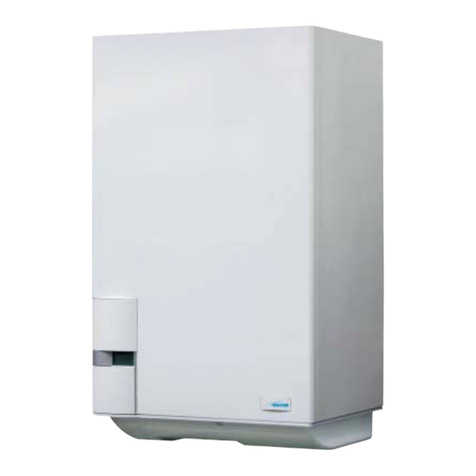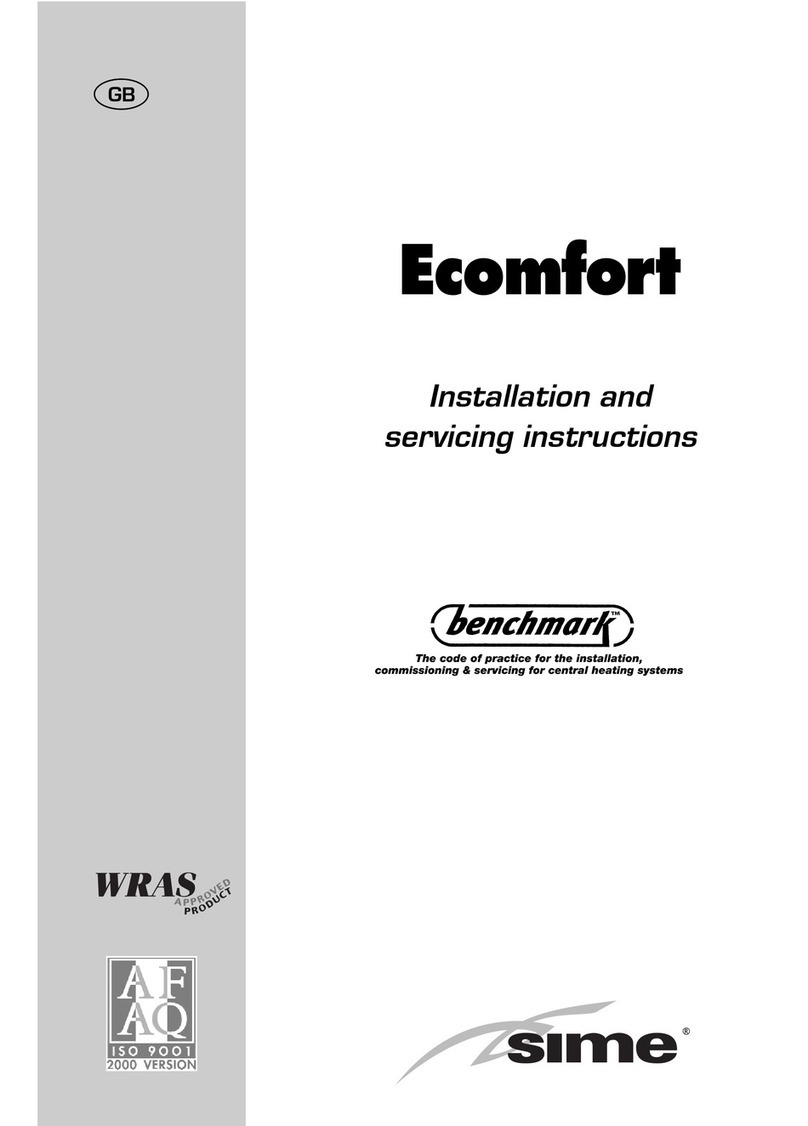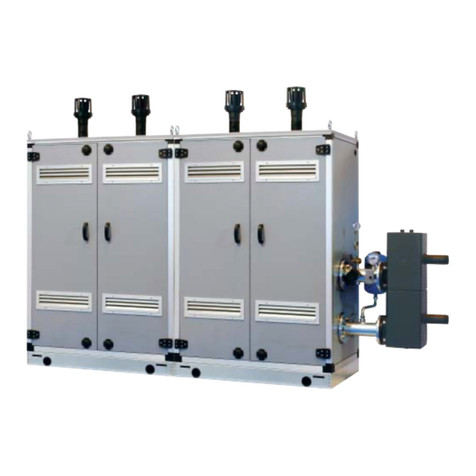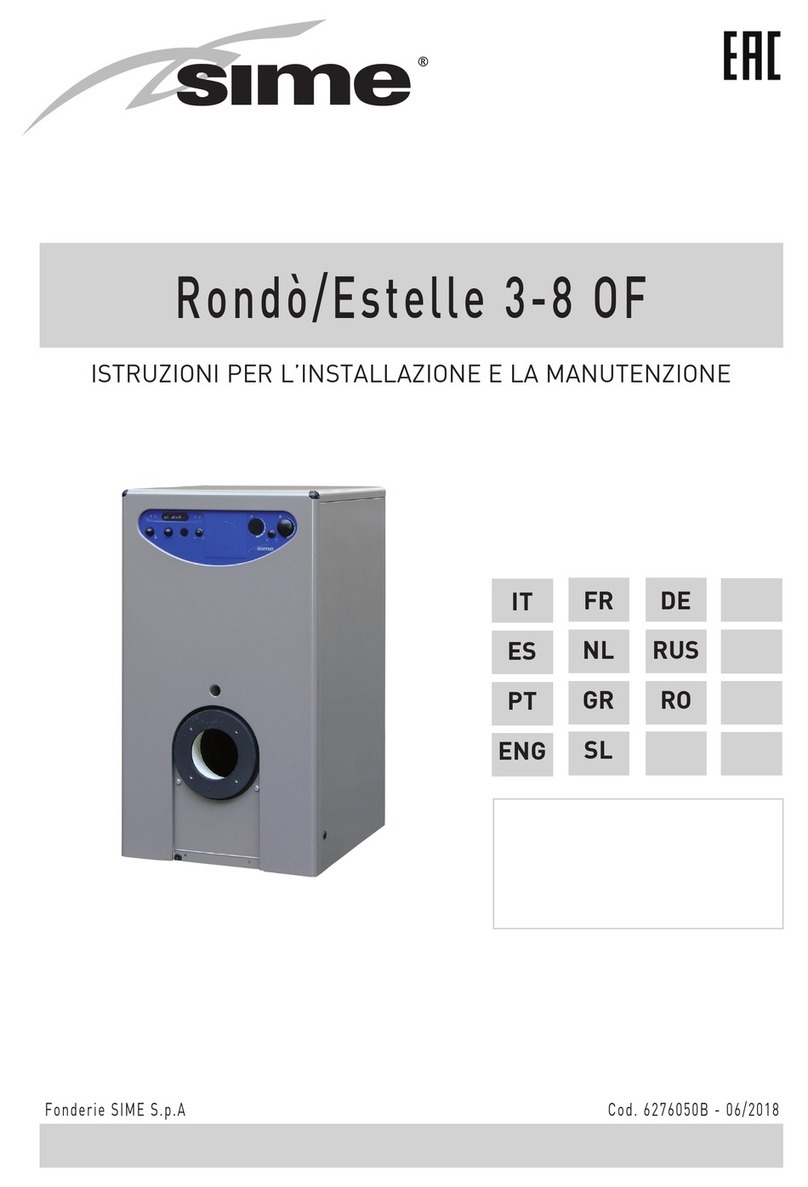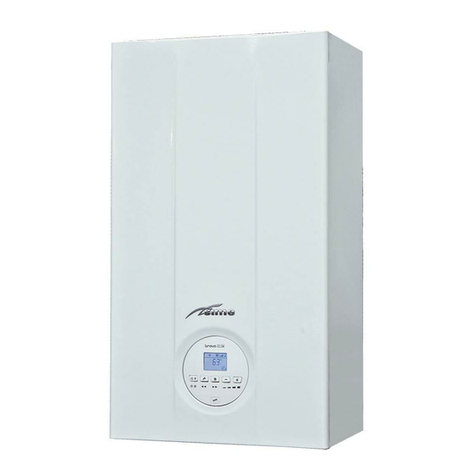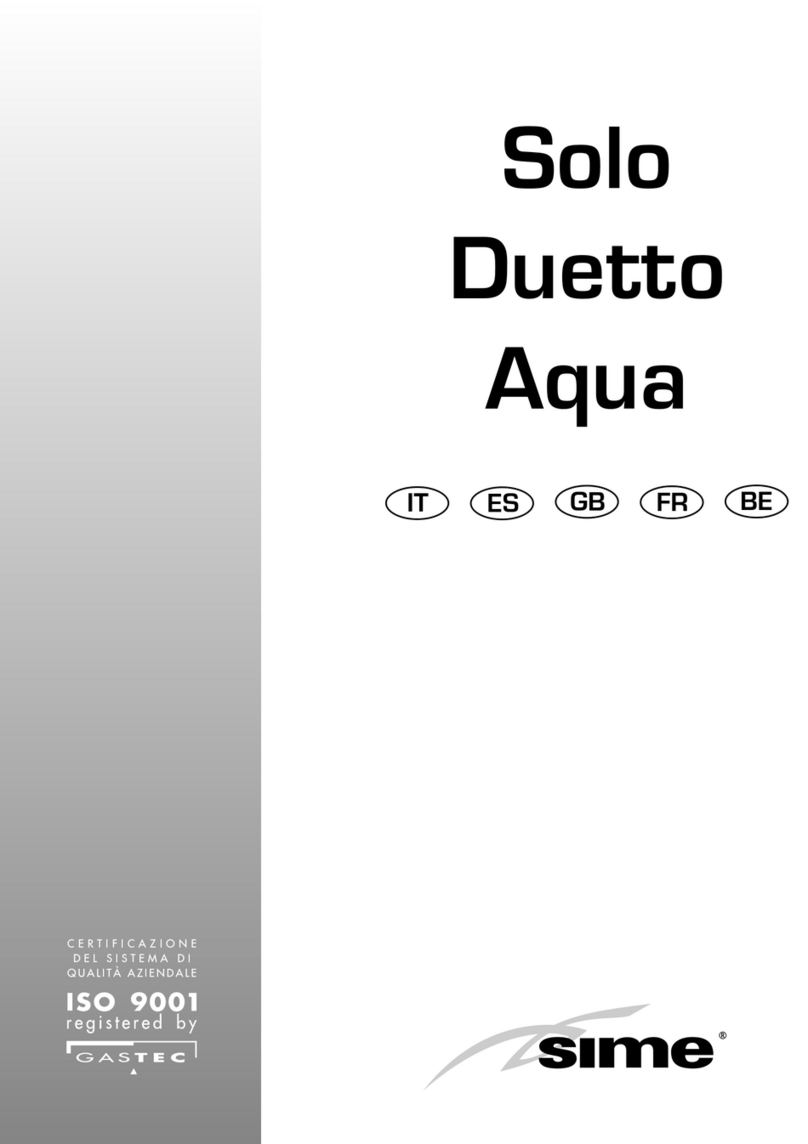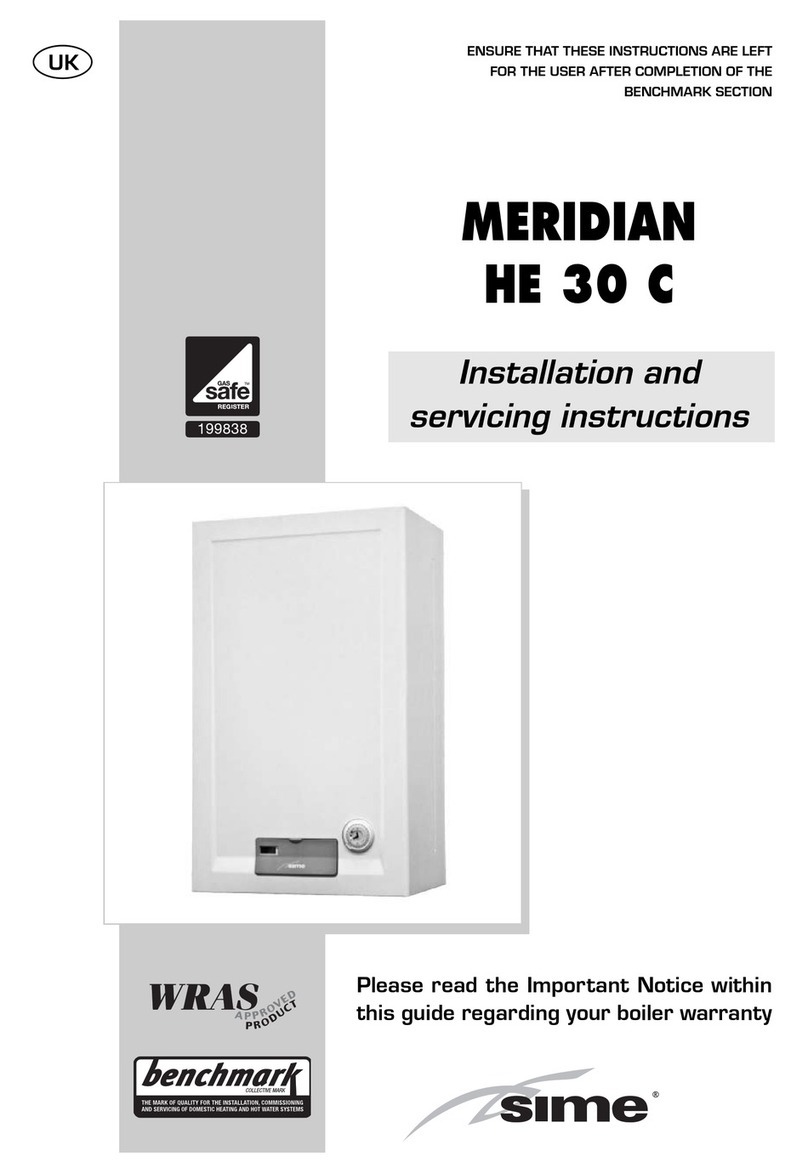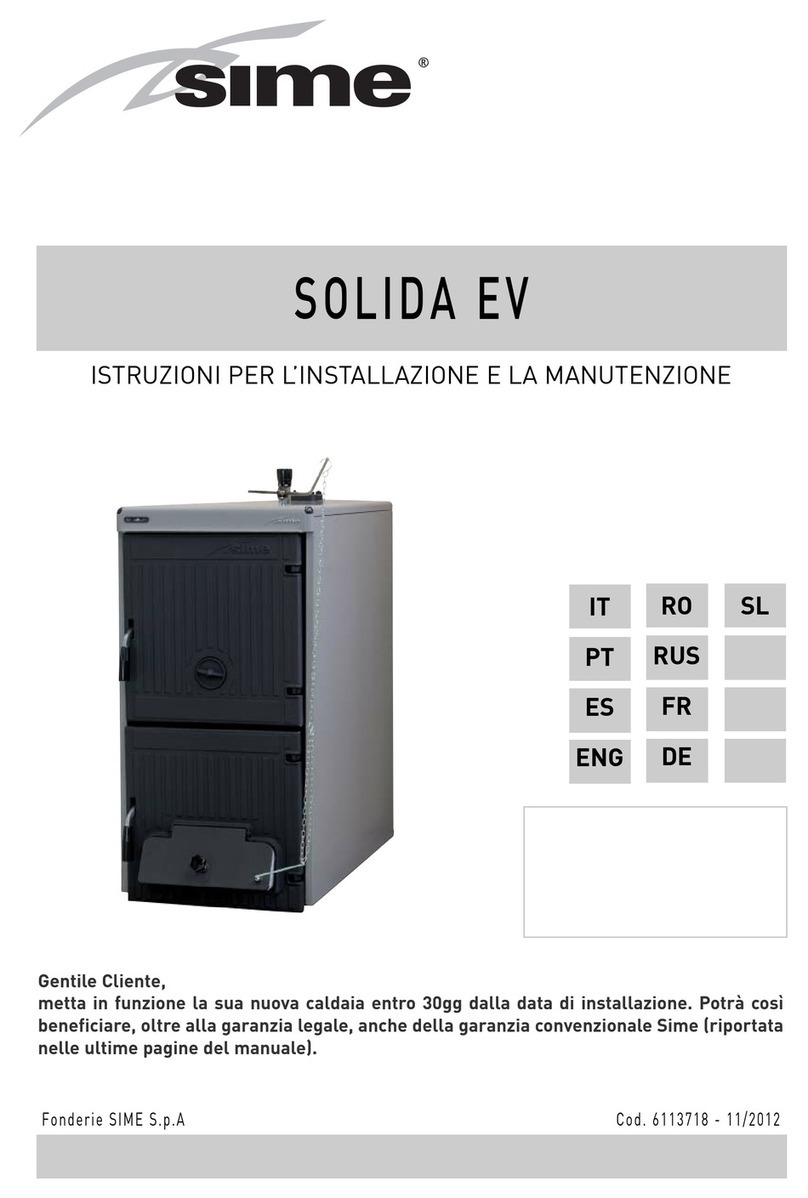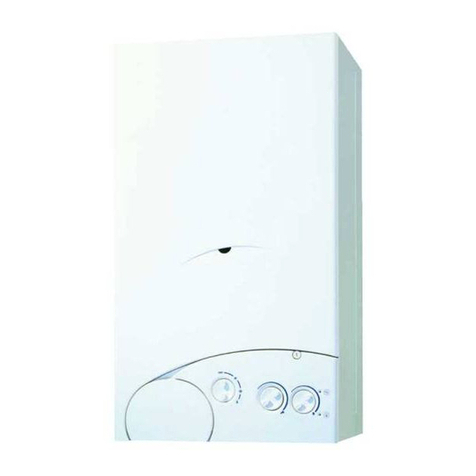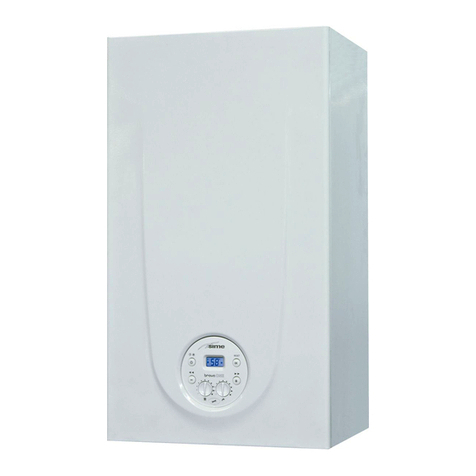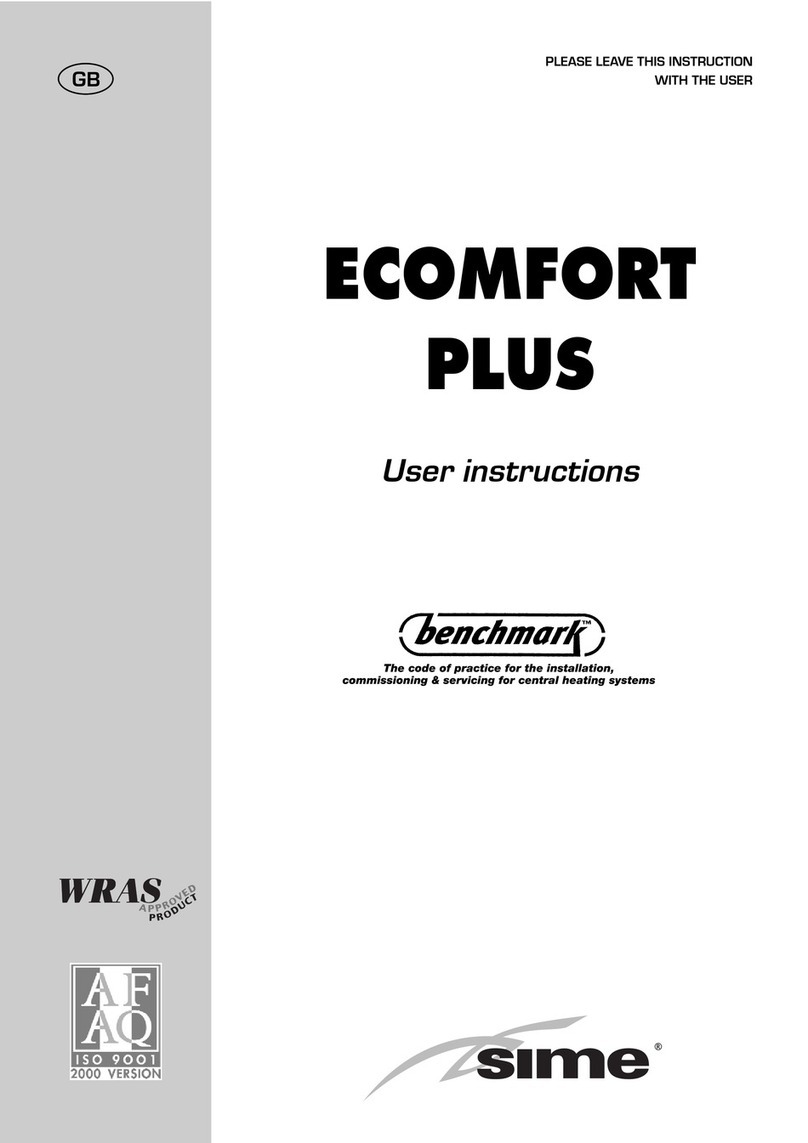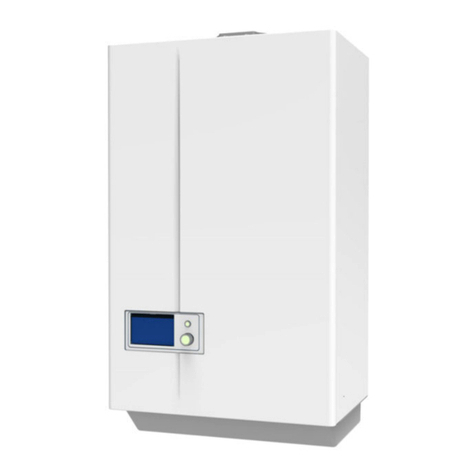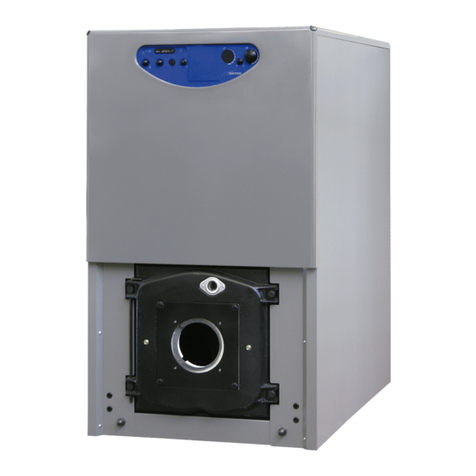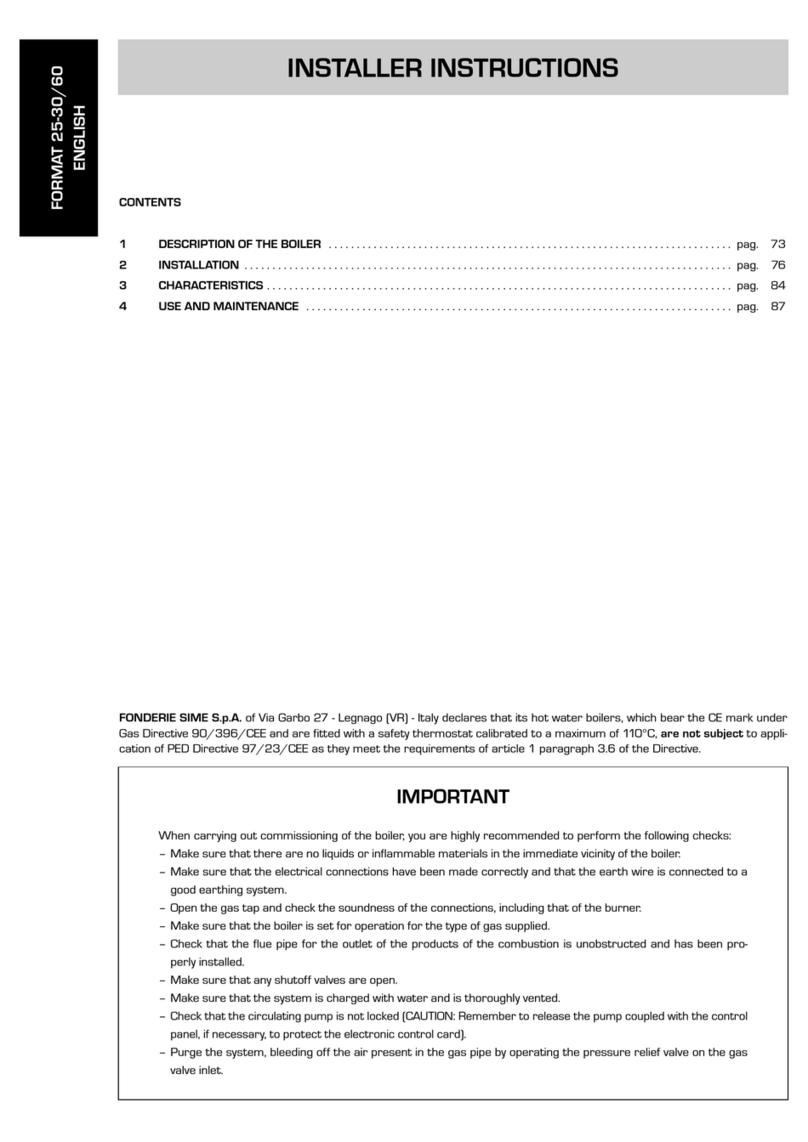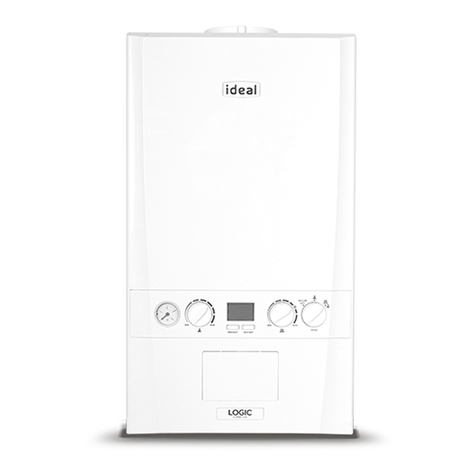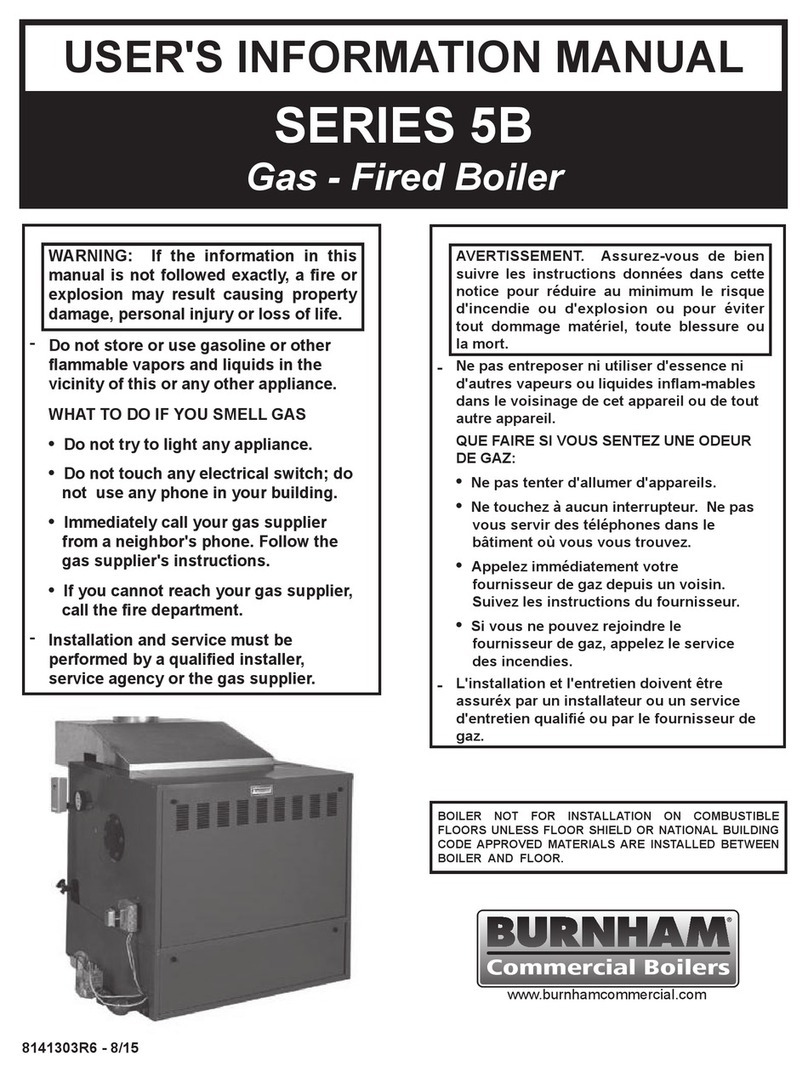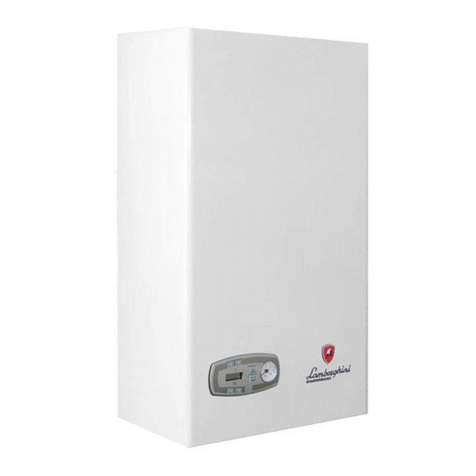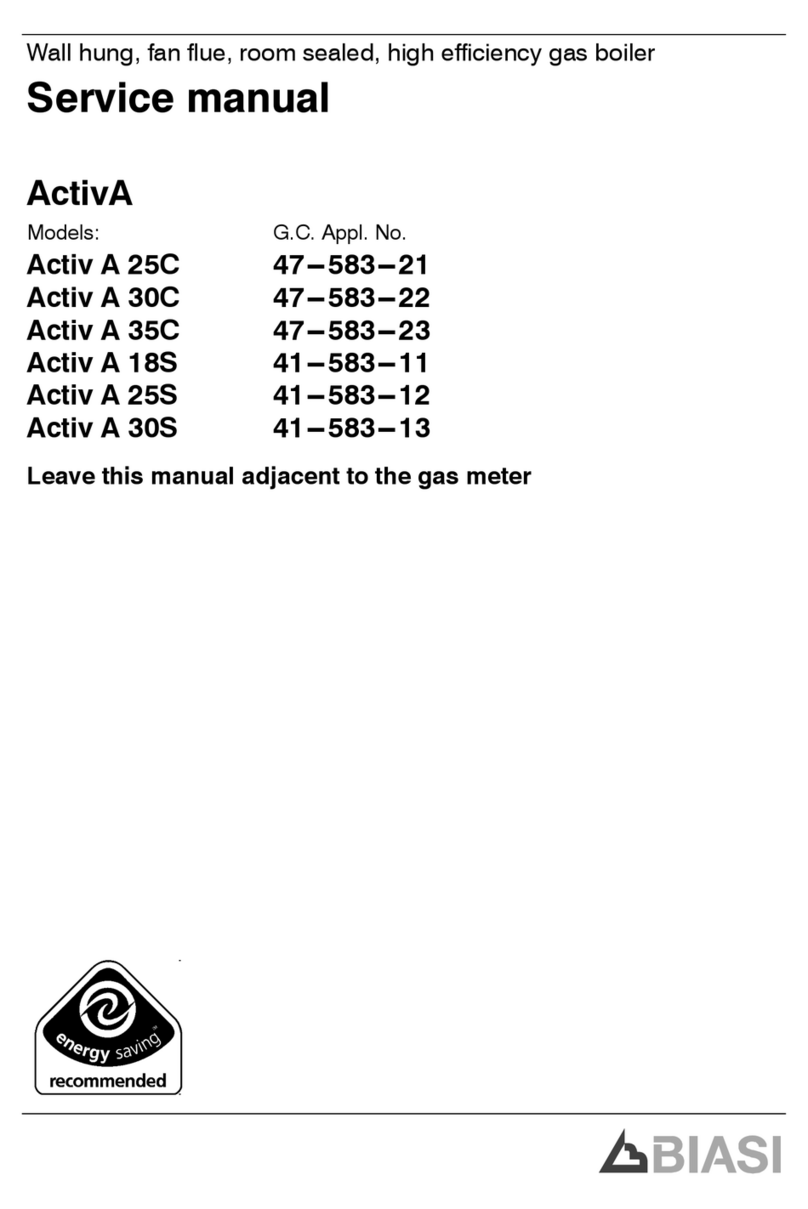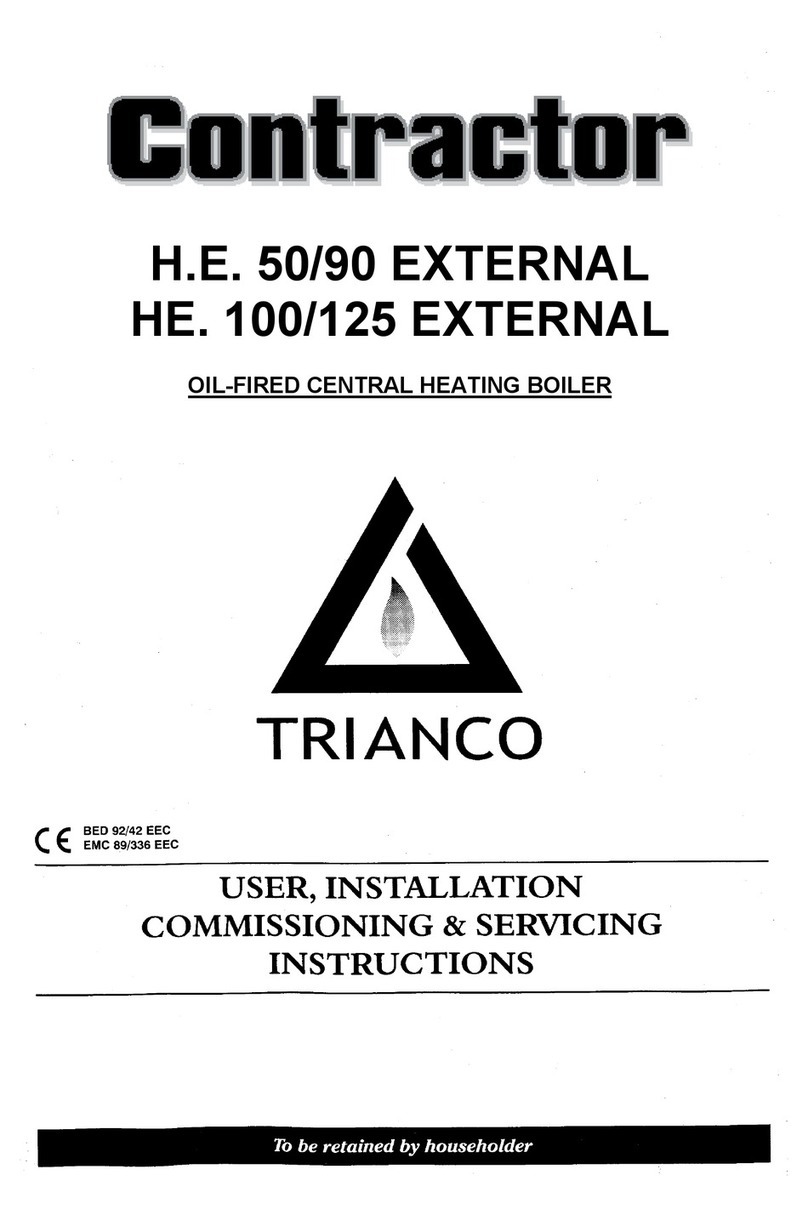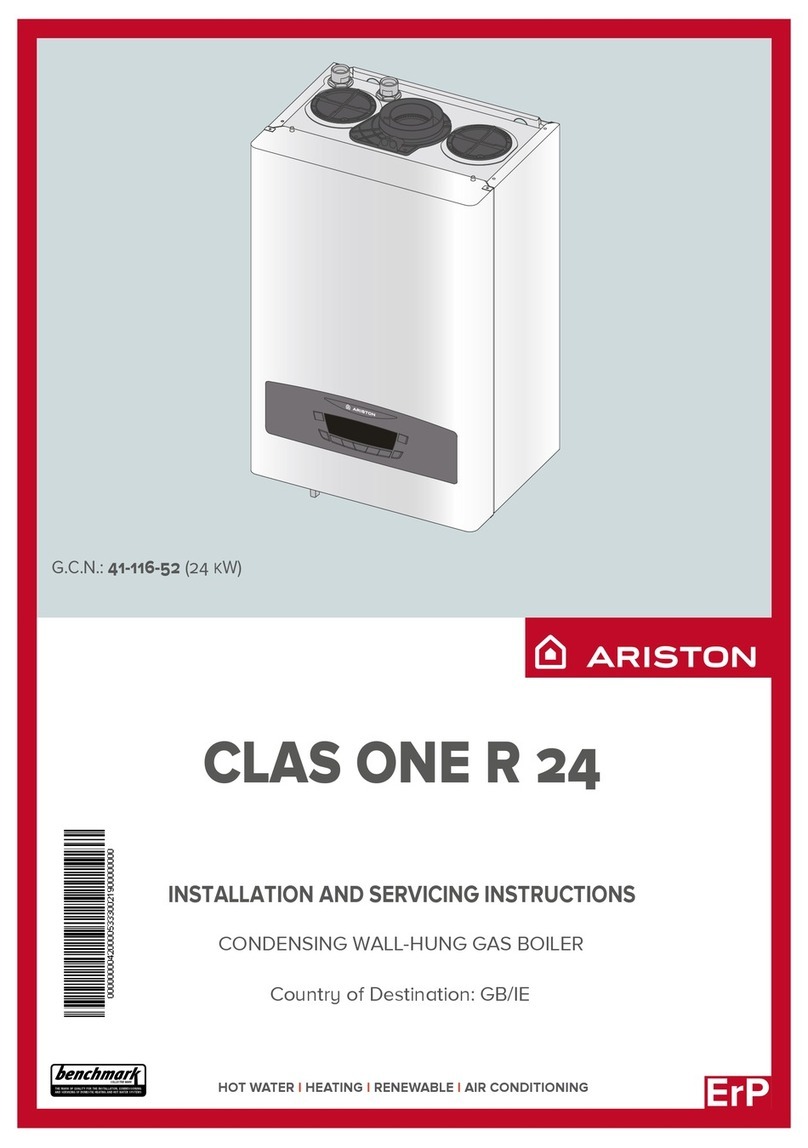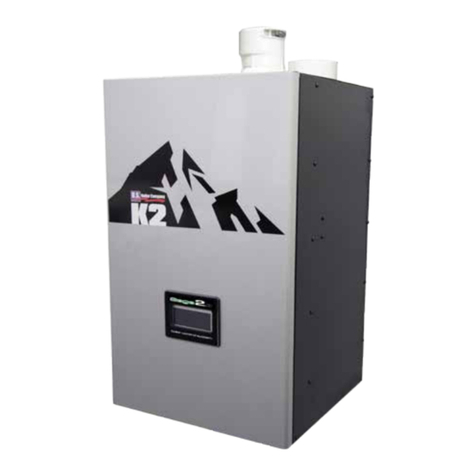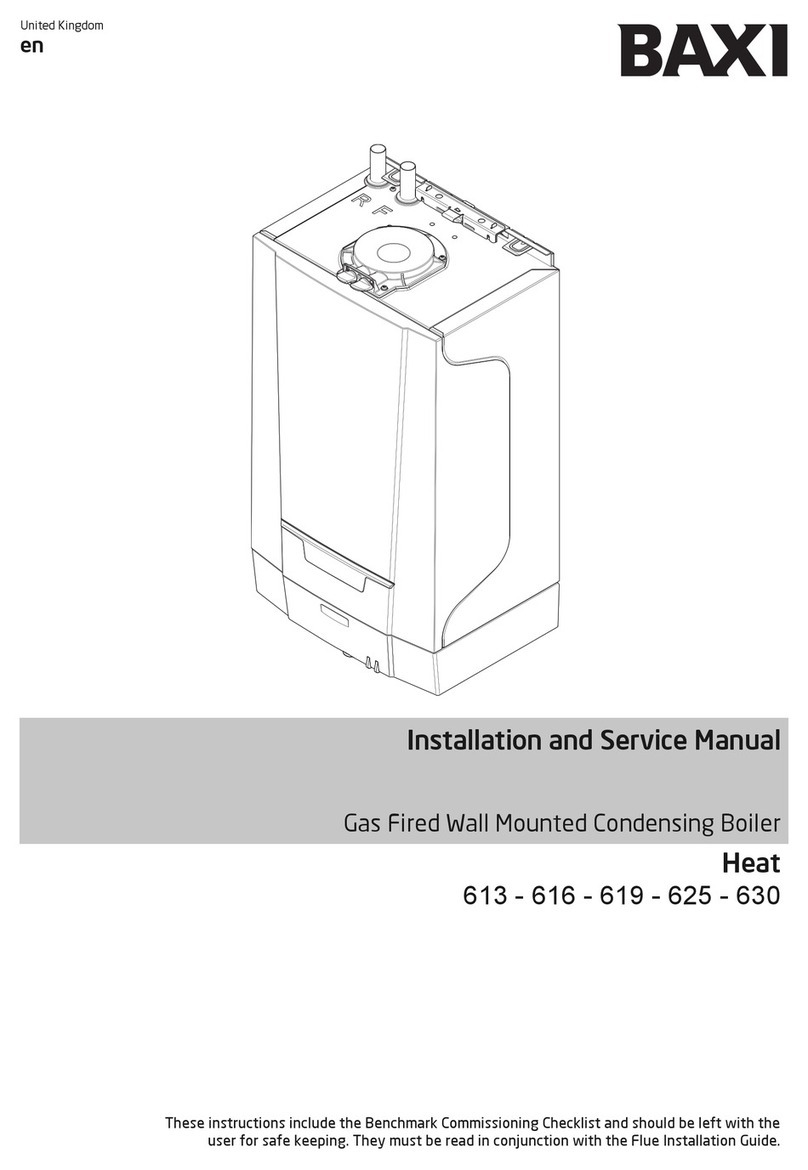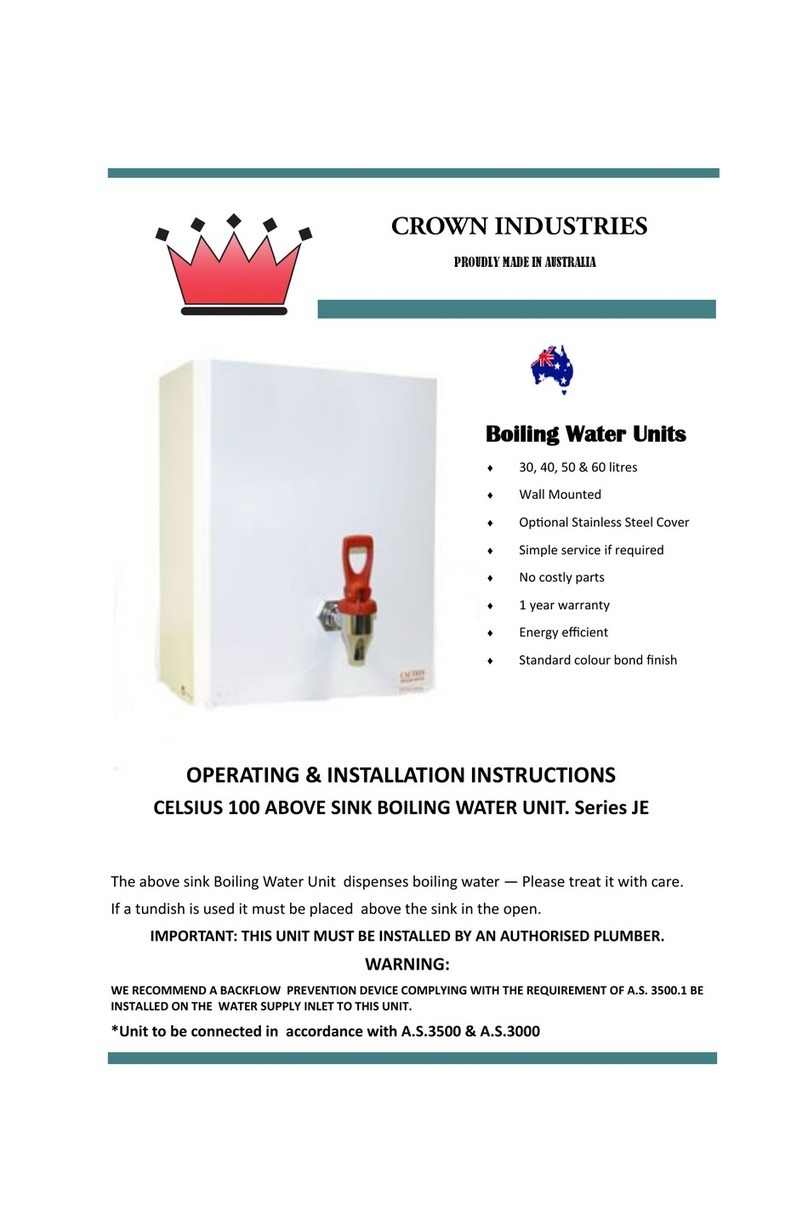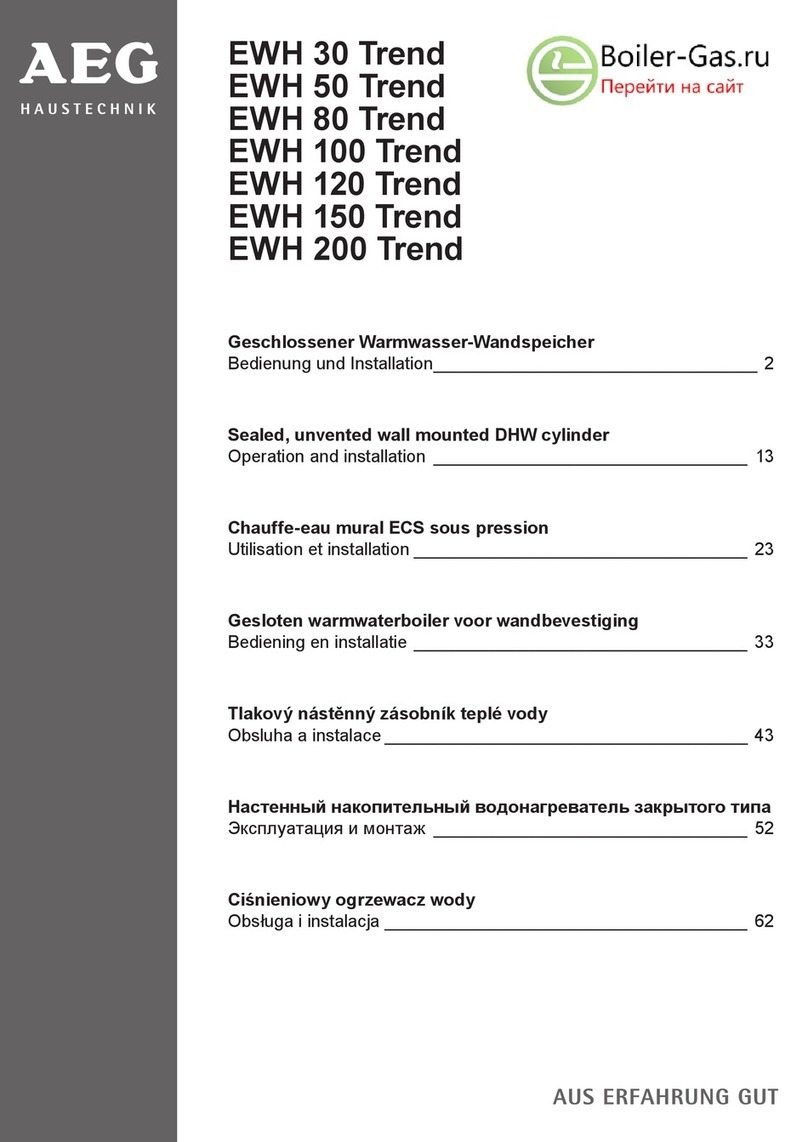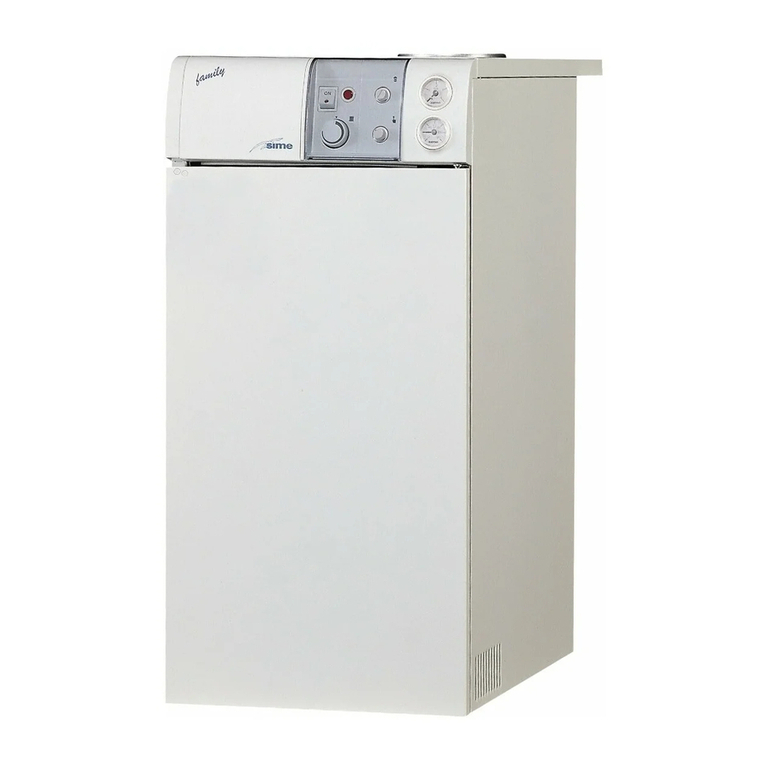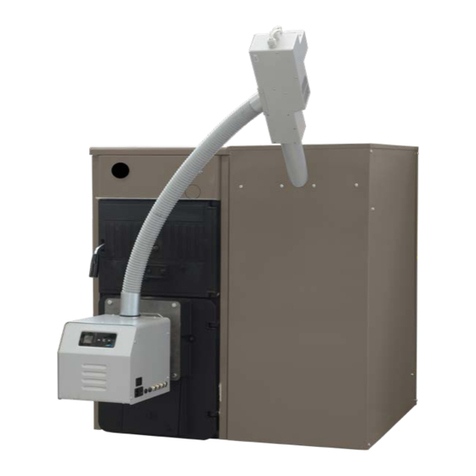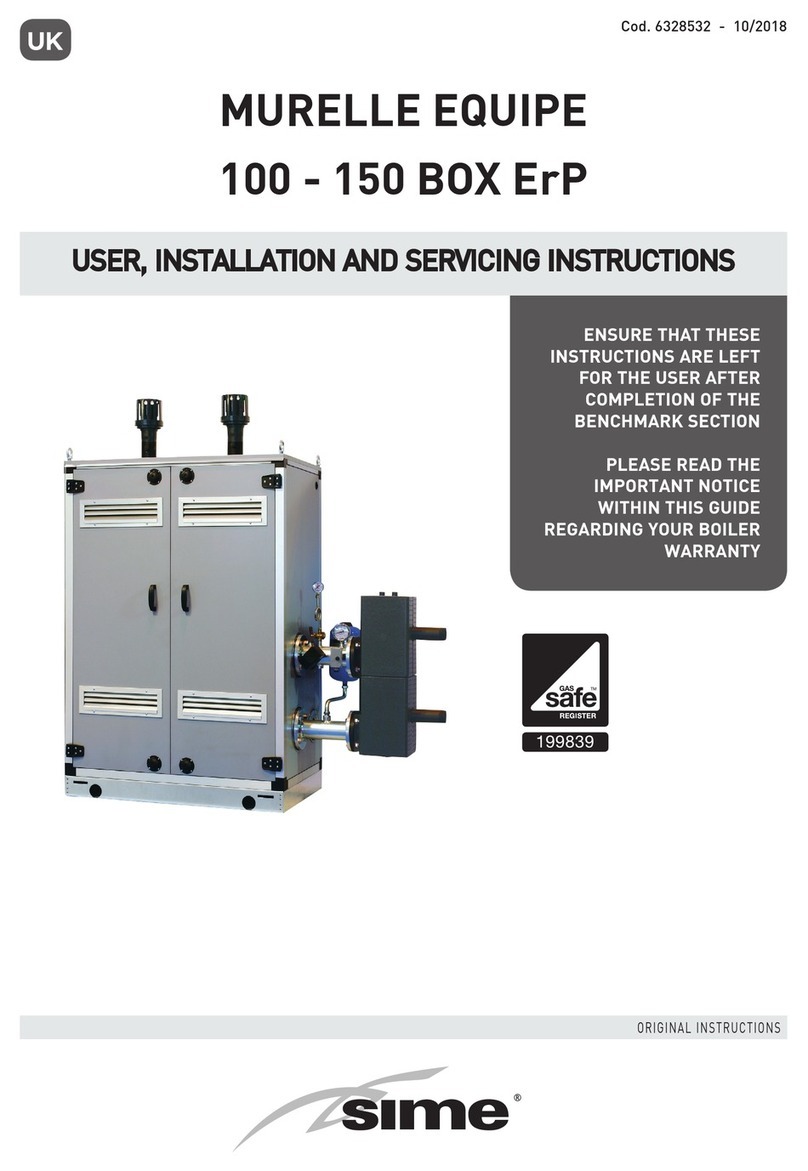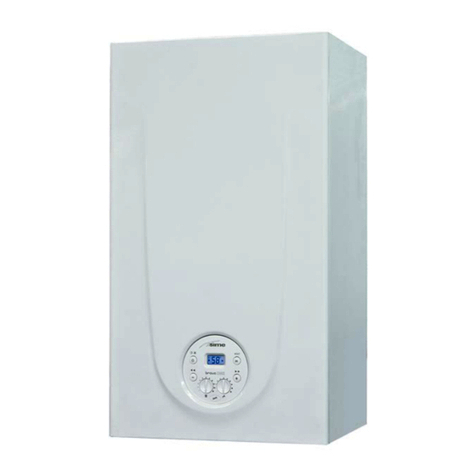
39
wer tie rods, both in the front and rear side
of the boiler, two nuts are tightened, one
of which is used to block the side support
brackets.
The assembly of the casing components
must be carried out in the following way:
– Unscrew with some rotations the second
or third nut of each tie rod.
– Connect the left side (1) on the lower and
upper tie rod of the boiler and adjust the
position of the nut and lock-nut of the
upper tie-rod.
– Block the side by tightening the locknuts.
– In order to assembly the right side (2)
proceed in the same way.
– Connect the rear panel (4) introducing
the two splines in the vents obtained on
each side and lock it with self-threading
screws.
– The protection deflector (5) is fixed to
the control panel (6) with three self-th-
reading screws. Insert the mineral wool
between the two components.
– Fasten the front panel (6) using the pres-
sure pins.
– Unwind the capillary of the thermometer
(7) and and introduce it in the left sheath
of the rear head introducing the contact
spring which must be cut at about 45
mm. The thermometer cable must be
placed above the insulation and must not
contact directly the iron cast body.
– Fasten the cover (8) to the sides of the
boiler using the pressure pins.
- Apply the BOILER TECHNICAL DATA
adhesive plate on the right or left side of
the covering, so as to be legible when the
appliance is installed.
NOTICE: Store the “Test report” and “De-
claration of conformity” placed in the
combustion chamber together with the
documents of the boiler.
4.6 DRAUGHT REGULATOR
WITH THERMOSTATIC
OPERATION
By means of the draught regulator with
thermostatic operation, a continuous va-
riability of the air introduced in the boiler
furnace can be obtained.
By means of a connecting chainlet, this re-
gulator acts on the lower primary air intake
port.
Once the set temperature has been rea-
ched, the regulator decreases the opening
of the air intake port automatically, so to
slow down the combustion and prevent
over-heating.
In order to optimise the combustion on the
upper load port, place a round adjusting
port that distributes the secondary air
countercurrent compared to the path of the
combustion products.
This process further increases the yield
and allows exploiting the combustion more
effectively.
Two types of thermostatic regulators can
be assembled on the boilers.
4.6.1 “THERMOMAT RT-C” Regulator
(fig. 7)
The “Thermomat” regulator is equipped
with a thermosetting resin knob of an
adjustment field from 30 to 100 °C.
Screw the regulator on the 3/4” opening
of the anterior head and orientate the red
index on the upper part.
The lever with the chainlet should be intro-
duced in the regulator holder after having
assembled the instrument holder board
and after having removed the plastic lock.
If the joint is taken out, which fixes the
lever with the chainlet, take care in assem-
bling it again in the same position.
After having placed the knob at 60°C, block
the lever with the chainlet in a slightly
inclined position downwards, so that
the chainlet will be in axis with the air
gate damper. For the adjustment of the
“Thermomat”, which essentially consists
in the determination of the chainlet length,
proceed in the following way:
– Place the knob at 60°C.
– Switch on the boiler with opened air gate
damper.
– When the water temperature of 60° C is
reached in the boiler, fix the chainlet in
such a way on the lever of the air gate
damper, in order to obtain an opening of
about 1 mm.
– Now the regulator is calibrated and it is
possible to choose the desired operating
temperature by rotating the knob.
4.6.2 “REGULUS RT2” Regulator
(fig. 8)
The adjustment field is included betwe-
en 30 and 90°C (fig. 8). Follow the same
instructions of the “Thermomat” regulator
for the assembly and the activation.
4.7 SAFETY EXCHANGER
The safety exchanger is supplied upon re-
quest with a kit:
- code 8105200 for SOLIDA EV 3/4/5
- code 8105201 for SOLIDA EV 6/7.
The kit must be used on closed expansion
tank systems with power lower than 35 kW.
Its function is to cool the boiler in case of
over-temperature, by using a thermal di-
scharge valve connected to the exchanger
inlet hydraulically.
In correspondence to the exchanger outlet,
place one drainpipe with funnel and a
siphon that drive to a suitable discharge.
The discharge must be visible for inspec-
tion.
ATTENTION: Failure to comply with this
precaution, a possible activation of the
thermal discharge valve can damage per-
sons, animals and objects, which the ma-
nufacturer is not responsible for.
Before commissioning the boiler, ensure
that the water flow of the thermal dischar-
ge valve is guaranteed.
Fig. 8
“REGULUS RT2” Regulator
Fig. 7
“THERMOMAT RT-C” Regulator











